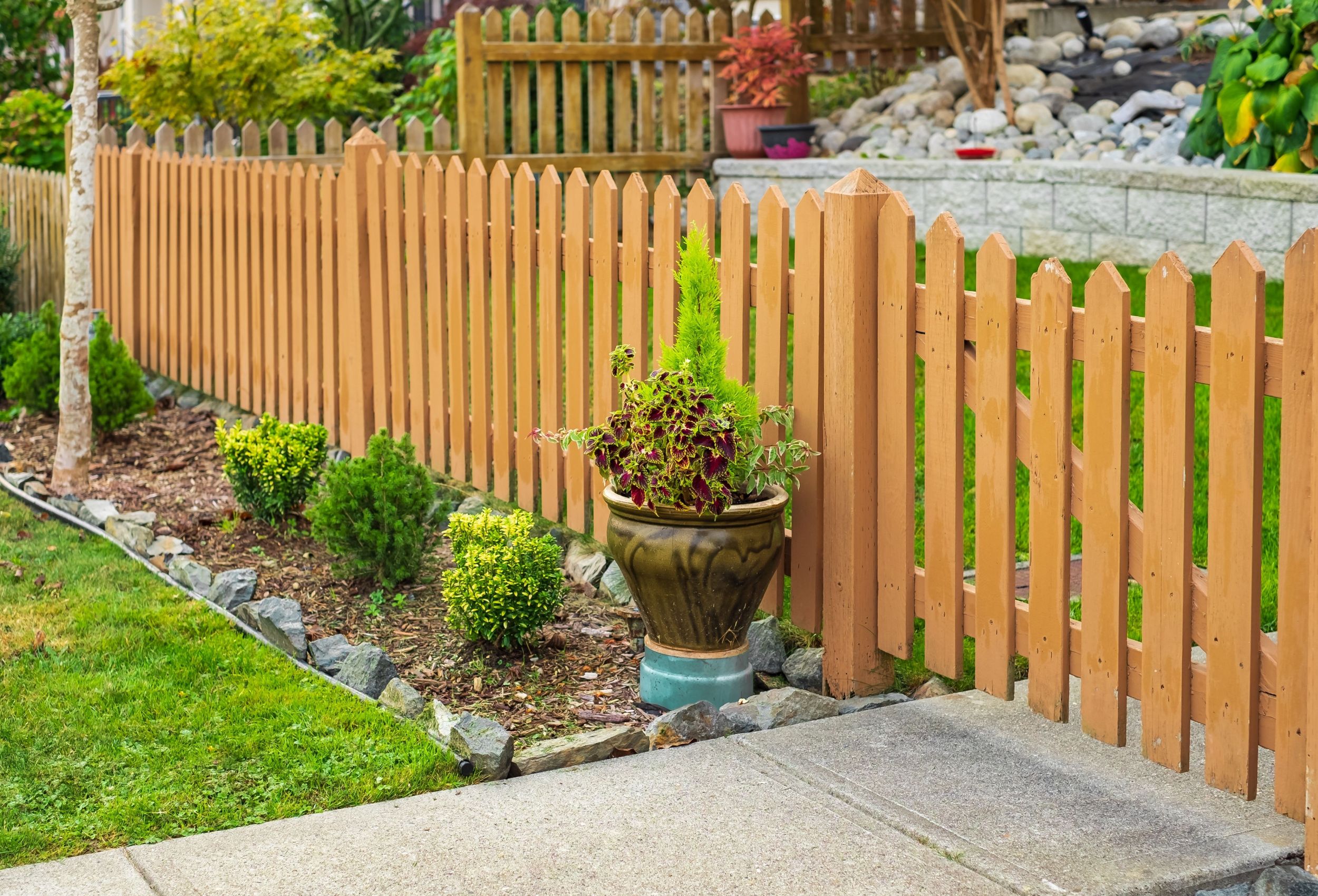All Categories
Featured
Your fencing is subjected to various weather condition problems year-round, and while it functions as a vital part of your residential property, it's additionally among the most prone aspects when it involves weather-related damage. Harsh winds, heavy rainfall, severe temperature levels, and UV exposure can all take a toll on your fence's integrity, resulting in tear and wear. Fortunately, there are a few actions you can require to protect your fence and prolong its life-span. Below are some reliable methods to safeguard your fence from weather-related damage.
Wood Fences: While wood is a traditional selection for fence, it is vulnerable to warping, insect, and rot damage, particularly in locations with high wetness. Pressure-treated timber or cedar is a lot more long lasting, but regular maintenance is essential to maintain it in great problem. Vinyl Secure fencing: Vinyl is an exceptional choice for those trying to find a weather-resistant and low-maintenance fence. It's unsusceptible moisture, won't warp or fracture in the warm, and withstands fading from UV rays. Steel Fence: Wrought iron and light weight aluminum are long lasting products for secure fencing, however they require a rust-resistant layer to shield them from corrosion as a result of wetness. A protective finishing or normal upkeep can stop rust and expand the life of steel fencings. Composite Fencing: Made from a mix of timber fibers and plastic, composite fencings are highly resistant to weather aspects, consisting of uv, dampness, and warmth rays. This product supplies a balance of sturdiness and visual appeal. Picking a product fit to your climate will certainly provide far better protection for your fence in the lengthy term.
Seal or Discolor the Timber: Applying a top quality sealer or discolor to your wood fencing creates a waterproof obstacle that prevents wetness from going into the timber. It also aids protect the timber from UV rays, which can trigger staining and drying out. Reapply Sealant Consistently: In time, the protective barrier of your sealer or stain can put on down. Depending upon your environment, it's a good concept to reapply every one to 2 years to keep the wood shielded. This therapy will preserve the fence's appearance, protect against rot, and lengthen its life-span.
![]()
For added protection, think about using wind-resistant mesh displays or panels in areas where wind is a significant issue. This additional layer can assist minimize the pressure that the wind exerts on your fencing.
Examine Drain: Make sure that the ground around your fence slopes away from the posts. Proper drain permits water to stream away from the fencing, protecting against wetness accumulation. Mount Drainage Equipments: In locations where drain is a concern, take into consideration adding a French drainpipe or gravel around the base of your fence messages to redirect water away from the framework. Good drain can stop rot, rust, and other kinds of weather-related deterioration.
![]()
![]()
Concrete Footings: Establish fencing articles in concrete to stop them from loosening up over time as a result of dirt disintegration or shifting ground. Metal Dental Braces: Adding metal dental braces to fencing messages can provide added toughness and reduce the danger of leaning or breaking. Strengthening your blog posts ensures that your fencing will certainly remain in place, even throughout severe weather.
For wooden fences, delicately clean the surface area with a mild detergent to eliminate dirt and gunk. For plastic fencings, make use of a soft cloth and cleaning service to stop buildup. For metal fences, inspect for corrosion and sand it off prior to using a fresh layer of paint. Final thought. Your fencing is a crucial attribute of your property, and with the ideal treatment, it can endure the challenges positioned by the weather. By selecting sturdy materials, executing regular upkeep, and reinforcing powerlessness, you can secure your fence from the components and extend its life. Regular assessments, applying safety finishes, and taking steps to manage moisture and wind direct exposure will help make sure that your fencing continues to be solid, useful, and attractive for years to find.
- Select Weather-Resistant Materials. The materials you choose for your fence can have a significant influence on its capability to endure the elements. Different materials are better geared up to handle certain weather. Below's a malfunction of exactly how numerous products stand up against the weather condition:
Wood Fences: While wood is a traditional selection for fence, it is vulnerable to warping, insect, and rot damage, particularly in locations with high wetness. Pressure-treated timber or cedar is a lot more long lasting, but regular maintenance is essential to maintain it in great problem. Vinyl Secure fencing: Vinyl is an exceptional choice for those trying to find a weather-resistant and low-maintenance fence. It's unsusceptible moisture, won't warp or fracture in the warm, and withstands fading from UV rays. Steel Fence: Wrought iron and light weight aluminum are long lasting products for secure fencing, however they require a rust-resistant layer to shield them from corrosion as a result of wetness. A protective finishing or normal upkeep can stop rust and expand the life of steel fencings. Composite Fencing: Made from a mix of timber fibers and plastic, composite fencings are highly resistant to weather aspects, consisting of uv, dampness, and warmth rays. This product supplies a balance of sturdiness and visual appeal. Picking a product fit to your climate will certainly provide far better protection for your fence in the lengthy term.
- Routinely Treat Wooden Fencings. If you have a wood fence, protecting it from dampness, temperature level, and sunshine fluctuations is essential. Wood can soak up dampness from humidity, snow, or rainfall, creating it to rot and degrade. Below's just how you can protect wooden fences:
Seal or Discolor the Timber: Applying a top quality sealer or discolor to your wood fencing creates a waterproof obstacle that prevents wetness from going into the timber. It also aids protect the timber from UV rays, which can trigger staining and drying out. Reapply Sealant Consistently: In time, the protective barrier of your sealer or stain can put on down. Depending upon your environment, it's a good concept to reapply every one to 2 years to keep the wood shielded. This therapy will preserve the fence's appearance, protect against rot, and lengthen its life-span.

- Set up Windbreaks. Solid winds can create substantial damage to fences, specifically those made of lightweight products or tall structures. These natural barriers can aid deflect wind, avoiding straight gusts from harming your fencing.
For added protection, think about using wind-resistant mesh displays or panels in areas where wind is a significant issue. This additional layer can assist minimize the pressure that the wind exerts on your fencing.
- Ensure Correct Water Drainage Around Your Fence. Standing water is just one of the leading sources of fencing damage, specifically for wood fences. Water can weaken the fence messages, causing them to rot and deteriorate faster. To stop this:
Examine Drain: Make sure that the ground around your fence slopes away from the posts. Proper drain permits water to stream away from the fencing, protecting against wetness accumulation. Mount Drainage Equipments: In locations where drain is a concern, take into consideration adding a French drainpipe or gravel around the base of your fence messages to redirect water away from the framework. Good drain can stop rot, rust, and other kinds of weather-related deterioration.

- Trim Overhanging Branches and Vines. Looming tree branches and vines can cause damage to your fence during tornados or high winds. To secure your fence, trim any branches or plants that hang over or near the fence frequently.
- Reinforce Fence Posts. The security of your fence mostly depends upon the problem of the articles. Fence messages are vulnerable to shifting, leaning, and decomposing, especially during periods of severe climate. If your fencing remains in a location that experiences high winds or ices up throughout winter, it is necessary to strengthen the blog posts to keep stability. Some ways to strengthen your fencing blog posts include:

Concrete Footings: Establish fencing articles in concrete to stop them from loosening up over time as a result of dirt disintegration or shifting ground. Metal Dental Braces: Adding metal dental braces to fencing messages can provide added toughness and reduce the danger of leaning or breaking. Strengthening your blog posts ensures that your fencing will certainly remain in place, even throughout severe weather.
- Normal Examinations and Upkeep. Regular examinations are essential for recognizing very early indications of weather-related damages. Examine your fence after tornados or heavy rainfall to search for issues such as loose boards, drooping messages, or rusted locations. Early discovery of minor issues can save you from expensive repair services later on. Additionally, cleansing your fencing regularly assists keep its problem. As an example:
For wooden fences, delicately clean the surface area with a mild detergent to eliminate dirt and gunk. For plastic fencings, make use of a soft cloth and cleaning service to stop buildup. For metal fences, inspect for corrosion and sand it off prior to using a fresh layer of paint. Final thought. Your fencing is a crucial attribute of your property, and with the ideal treatment, it can endure the challenges positioned by the weather. By selecting sturdy materials, executing regular upkeep, and reinforcing powerlessness, you can secure your fence from the components and extend its life. Regular assessments, applying safety finishes, and taking steps to manage moisture and wind direct exposure will help make sure that your fencing continues to be solid, useful, and attractive for years to find.
Latest Posts
Explore Cost-Effective Auto Repairs with Montclare’s Limited-Time Service Specials
Published May 28, 25
1 min read
Explore WyHy FCU – Key Tools for Your Financial Success
Published May 26, 25
1 min read
Why Regular Auto Maintenance at Montclare Auto Repair Reduces Costs
Published May 25, 25
1 min read